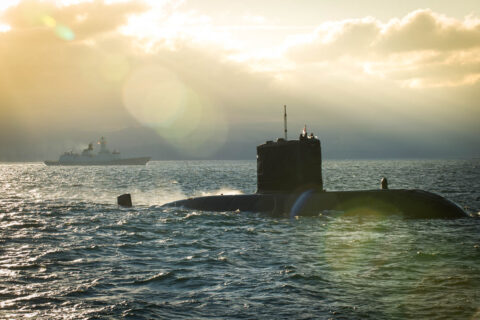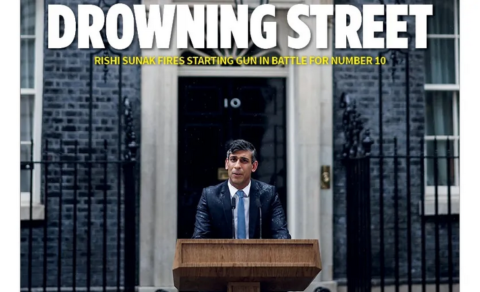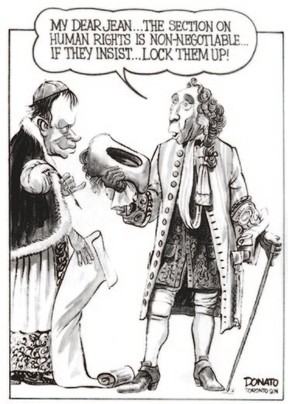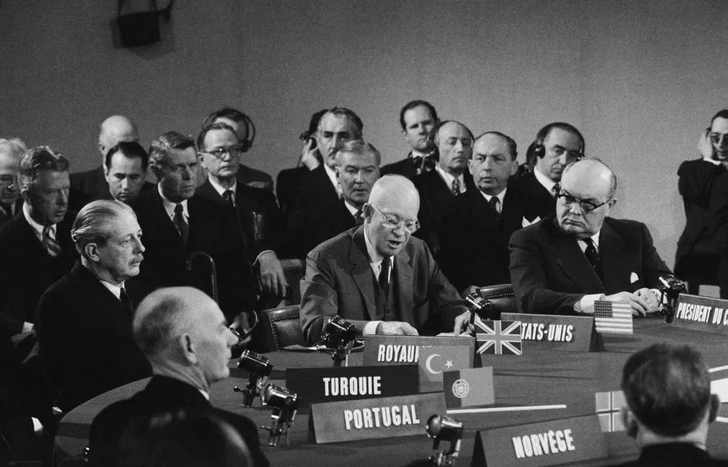The Tank Museum
Published Apr 13, 2024Two tanks designed to fight each other in Northern Europe would face each other during the Iran-Iraq war in 1981. On one side, the British built Chieftain MBT. On the other, the Soviet-built T-62.
In this video, we examine what happened during Operation Nasr to find out which tank came out on top …
00:00 | Intro
01:19 | Meet the Tanks
02:15 | The T-62
03:26 | The Chieftain
06:21 | From Paper to the Battlefield
09:25 | The Outcome and Findings
(more…)
July 24, 2024
Chieftain V T-62 | Operation Nasr, Iran – Iraq War, 1981
QotD: The “strategic defensive” approach to the attrition battles of WW1
Well, perhaps you say, that is a bit simplistic; what if we go on a strategic defensive – adopting a strategy of attrition? Note we are fairly far now from the idea that the easy solution to trench warfare was “don’t attack”, but this is the first time we reach what appears on its face to be a workable strategy: accept that this is a pure war of attrition and thus attempt to win the attrition.
And here is where I, the frustrated historian, let out the primal cry: “They did that! Those ‘idiot’ generals you were bashing on a moment ago did exactly this thing, they did it in 1916 and it didn’t work.”
As Robert Doughty (op. cit.) notes quite effectively, after the desperate search in 1915 for ways either around the trench stalemate or through it (either way trying to restore a war of maneuver), Joseph Joffre, French chief of the army staff, settled on a strategic plan coordinating British, Italian, French and Russian actions designed around a strategy of “rupture” by which what was meant was that if all of the allies focused on attrition in each of their various theaters, eventually one theater would break for lack of resources (that’s the rupture). He was pretty damn explicit about this, writing about the war as a “struggle of attrition” in May, 1915 and setting a plan of action in December of 1915 to “do everything they can to attrit the adversary”.
Joffre’s plan did not go perfectly (the German offensive at Verdun upset the time-tables) but it did, in fact mean lower French losses in 1916 than in 1915 or 1914 and more severe German losses. Meanwhile, the German commander, Erich von Falkenhayn would at least subsequently claim to have been trying to do the same thing: achieve favorable casualty ratios in a war of attrition, with his set piece being the Battle of Verdun, designed to draw the French into bloody and useless repeated counter-attacks on ground that favored the Germans (there remains a lot of argument and uncertainty as to if that attritional strategy was the original plan, or merely Falkenhayn’s excuse for the failure to achieve meaningful strategic objectives at Verdun). In the end, the Verdun strategy, if that was the strategy, failed because while the Germans could get their favorable ratio on the attack, it slipped away from them in the inevitable French counter-attacks.
But as Clausewitz reminds us (drink!) will – both political and popular – is a factor in war too (indeed, it is one of the factors as part of the Clausewitzian trinity!). Both Joffre and Falkenhayn had to an extent seen that the war was going to run until one side ran out of soldiers and material and aimed to win that long, gruelling war; for which they were both promptly fired! The solution to the war which said that all one needed to do was sacrifice a few more million soldiers and wait 2, or perhaps 3 or maybe even 4 more years for the enemy to run out first was unacceptable to either the political leaders or the public. 1917 came around and both sides entrusted the war to generals who claimed to be able to produce victories faster than that: to Robert Nivelle and Erich Ludendorff, with their plans of bold offensives.
And to be clear, from a pure perspective of “how do we win the war” that political calculation is not entirely wrong. Going to the public, asking them to send their sons to fight, to endure more rationing, more shortages, more long casualty lists with the explanation that you had no plans to win the war beyond running Germany out of sons slightly faster than you ran France out of sons would have led to the collapse of public morale (and subsequent defeat). Telling your army that would hardly be good for their morale either (the French army would mutiny in 1917 in any event). Remember that in each battle, casualties were high on both sides so there was no avoiding that adopting an attrition strategy towards the enemy meant also accepting that same attrition on your own troops.
And, as we’ve discussed endlessly, morale matters in war! “Wait for the British blockade to win the war by starving millions of central Europeans to death” was probably, in a cold calculus, the best strategy (after the true winning strategy of “don’t have a World War I”), but it was also, from a political perspective, an unworkable one. And a strategy which is the best except for being politically unworkable is not the best because generals must operate in the real world, not in a war game where they may cheerfully disregard questions of will. In short, both sides attempted a strategy of pure attrition on the Western Front and in both cases, the strategy exhausted political will years before it could have borne fruit.
And so none of these easy solutions work; in most cases (except for “recruit a lost Greek demi-god”) they were actually tried and failed either due to the dynamics (or perhaps, more truthfully, the statics) of trench warfare or because they proved impossible implement from a morale-and-politics perspective, violating the fundamental human need to see an end to the war that didn’t involve getting nearly everyone killed first.
Bret Devereaux, “Collections: No Man’s Land, Part I: The Trench Stalemate”, A Collection of Unmitigated Pedantry, 2021-09-17.
July 23, 2024
Claim – “Everybody wants Gaza’s gas”
Tim Worstall explains why the popular idea that it’s demand for the natural gas reserves that sit under Palestine that is driving much of the situation in the Middle East is utter codswallop:

“Oil Platform in the Santa Barbara Channel, California” by Ken Lund is licensed under CC BY-SA 2.0 .
So we’ve a big thing about how all this fighting in Gaza is really about fossil fuels. @JamesMelville seems to think it’s true:
“Everybody wants Gaza’s gas.”
Oil and gas reserves – that’s the real proxy war in the Middle East.
This video provides a really succinct summary of the situation.
This “really succinct” summary includes the idea that the invasion of Iraq was all about access to that country’s oil. Which is very silly indeed. Before the war people paid Iraq for the oil. During the war people paid Iraq for the oil. After the war people are paying Iraq for the oil. The war hasn’t changed Iraq’s oil price — the global oil price has changed it, but not the war — and so the effect of the war upon access to Iraq’s oil has been, well, it’s been zero.
No, it’s not possible to then go off and say that Iraq wouldn’t sell to Americans and that’s why or anything like that. The US didn’t buy much Middle East oil anyway — mainly West African instead. But more than that, this is idiocy about how commodity markets work.
This is something we can test with a more recent example. So, there are sanctions on Russian oil these days over Ukraine. Western Europe, the US, doesn’t buy Russian oil. Russia is still exporting about what it used to. Because it’s a commodity, oil is.
What’s happening is that the Russian oil that used to come to Europe now goes to — say — India. And the Far East, or Middle East, whatever, oil that used to go to India now comes to Europe (the US is now a net exporter itself). Because that’s what happens with commodities. The very name, commodity, means they are substitutable. So, if one particular source cannot sell to one particular user then there’s a bit of a reshuffle. The same oil gets produced, the same oil gets consumed, it’s just the consumption has been moved around a bit and is now by different people. The net effect of sanctions on Russian oil has been, more or less, to increase the profits of those who run oil tankers. Ho Hum.
We’re also treated to the revelation that the US wants everyone to use liquefied natural gas because the US is the big exporter of LNG (well, it’s one). Therefore the US insists that Israel must develop the LNG fields off Gaza. Which is insane. If you’re an exporter you don’t want to start insisting on the start up of your own competition. The US demanding that the LNG not be produced at all would make logical sense but that’s not how conspirazoid ignorance works, is it? It has to be both a conspiracy and also a ludicrous one.
And a third claim. That this natural gas off Gaza is really worth $500 billion. That’s half a trillion dollars. We’ve looked at this value of gas off Gaza claim before and it’s tittery. $4 billion (that’s four billion, not five hundred billion) might be a reasonable claim and that’s just not enough to go to war over.
Trudeau announced new submarines for the RCN … don’t assume he’s really serious
At The Hub, J.L. Grantastein explains why Trudeau’s hasty commitment under pressure from our exasperated NATO allies is not likely to be met, and almost certainly not to be met fully:

HMCS Chicoutimi escorts Peoples Liberation Army (Navy) ships visiting Victoria on behalf of the Chinese military, 13 December 2016.
Photo: Cpl Carbe Orellana, MARPAC Imaging Services, ET2016-0468-03 ©2016 DND-MDN CANADA
Canada has no capacity to construct submarines, and the country’s shipyards are struggling to build destroyers, icebreakers, and supply ships. This means that submarines will need to be purchased from European or Asian shipyards with experience in building them. (There will be a certain irony if the RCN, having fought against U-boats in two world wars, ends up with German submarines.)
As of Trudeau’s announcement, let us be clear, no submarine design has been selected, and naval officers are said only to have been engaged in seeking the best models for the RCN. Given Canada’s broken defence procurement system, this is unlikely to be a quick process. The RCN may soon know what it wants but the bean counters will rule as they always do, and orders most likely will not be placed for at least three to five years.
Few expect that the Liberals will be in power in 2027, and if the Conservatives do form the government, it is worth noting that Pierre Poilievre has refused to commit to a date for Canada to meet its 2 percent pledge. New subs may not be an idea the Tories will accept.
If an old or new government does decide to continue with a submarine program, it is certain that a new conventional sub will cost at least $1 billion, many millions more to make it strong enough to operate for long periods in the Arctic, and millions more for its torpedoes, missiles, other weapons, radars, and electronic systems. The costs involved all but guarantee that 12 submarines are a pipedream — the RCN will be lucky to get four to six. Trudeau did not offer a timetable in his remarks, but it is highly unlikely that even a single submarine would be ready to go to sea before the early 2030s and the last by the 2040s.
Then there is the problem of manning a fleet of underwater vessels. The RCN has four Victoria-class boats now. These subs, purchased used from the Royal Navy, have not worked well, are constantly undergoing expensive repairs, and scarcely leave the dock. In other words, the crews have relatively little sea-going experience, the RCN is short of sailors already, and experienced mechanics and skilled technicians are in even shorter supply. Each sub will need more than sixty officers and sailors, and there must be at least three times that number on leave, on courses, or in training to support each crew.
There is little point in acquiring new submarines if there are no crews to sail in them, and with the fifteen new destroyers planned and just beginning construction, the senior service’s personnel needs must be a top priority. That need will not be met until the Canadian Armed Forces’ problems with recruitment are fixed, and that problem has bedevilled the military for decades. (I served on a Department of National Defence Special Committee in 1995 that advanced recommendations to improve recruiting, but nothing changed. Nothing has improved in the three decades since.)
Note that referring to the navy as “the senior service” is only appropriate when talking about Britain’s Royal Navy. The Royal Canadian Navy was established in 1910, long after the Canadian Army came into existence. I’m sure members of the RCN won’t mind if you make that mistake, however.
Why Most “Ancient” Buildings are Fakes
toldinstone
Published Apr 12, 2024Almost every ancient monument has been at least partially reconstructed, for a wide range of reasons …
Chapters:
0:00 Introduction
1:06 The Forum and Colosseum
2:27 The Ara Pacis
3:24 Early restorations
4:37 Mondly
5:47 Roman forts and baths
6:42 Knossos
7:23 The Stoa of Attalus
8:59 The Acropolis
10:05 When to restore?
(more…)
QotD: Coffee
Without a quart of coffee in the morning, I will be functionally retarded. I will stare at the wall like a stunned carp until noon. I will take things out of the refrigerator and put them in the pantry when I’m done with them. I will put toothpaste on my toothbrush and then attempt to shave with it. I will open peanuts, throw out the insides, and eat the shells. People at the grocery store will remind me to run home and put on pants. I will never turn my turn signal off. When my cell phone rings, I will answer my wallet.
Steve H., “I’m Going to Kill Myself: It’s as Simple as That”, Hog On Ice, 2005-03-18.
July 22, 2024
Kamalamentum
On Sunday, Joe Biden announced that he won’t be seeking the Democratic Party’s presidential nomination after all and that he supported Vice President Kamala Harris as the party’s best chance to win in November. Mark Steyn comments:
So Biden gets served the Ultimate Anyway, and we are now supposed to get excited about which white-male governors in the Democrat Party are willing to challenge the first female … first black … first “Asian-American” … first Montreal schoolgirl … first Canadian since Chester Arthur to be nominated for president.
Oh, no, wait — he wasn’t nominated; he succeeded after the incumbent was assassinated. Hmm.
If anyone thinks this is the last plot twist, you’re forgetting we’re in the final seasons of Dynasty here — the Fallon-abducted-by-space-aliens Moldavian-massacre phase.
[…]
There are a lot of voters who like the Higher Bollocks Kamala can slough off so effortlessly. The stuff about working together to understand where we are can, in the right hands, be an appealing simulacrum of profundity. Particularly when sluiced through the court eunuchs of the Washington press corps — the same guys who’ve been telling us these last couple of weeks that the Democrat bigshots are at war with each other and have no consensus on the way forward, rather than merely doing a bit of dime-store melodrama while implementing the plan predicted way back at the dawn of the Biden Era by Diane Calabrese.
There seems to be a lot of coordinating for a Sunday afternoon. The Clintons have already endorsed Kamala, and the Biden campaign finance chair has already moved on:
Please give what you can today (money given here will be used 100% to elect Kamala Harris President).
And, just to put this in a global context, Joe’s farewell message sounded a lot to me like a demented version of Liz Truss, British prime minister for twenty minutes. You can’t tell the palace coups without a scorecard: Liz, weeks after winning the Tory leadership, was taken out by “the markets”; Biden, weeks after winning the Democrat nomination, was taken out by the donors (“No more dough until no more Joe“). There’s a lot of it about, don’t you think? You’d almost get the impression “elections” are just boob bait for the rubes …
Still, let us shed a tear for the latest guy to be written out of the soap. It’s only a few weeks since MSNBC’s Joe Scarborough was hailing the alleged commander-in-chief as “intellectually, analytically … the best Biden ever“. Then, tragically, the analytical genius came down with Sudden Overnight Dementia Syndrome. Because that’s the world we live in: Long Covid, drive-thru dementia.
Biden now assures us that he’s going to finish his term — which would be a novelty as, in terms of putting in a full day’s work, he’s never really started it. But we shall see. I’ve said before that it would be greatly to Kamala’s advantage to run as the incumbent.
That’s still the way to bet.
“Dissident Christianity”
While I don’t have a god in this fight, I find much to agree with Fortissax here as he responds to another writer’s commentary on modern western Christianity in an essay he titles “Spiteful Mutant Christians“:

Dijon viewed from Saint-Bénigne Cathedral with the Palace of the States of Burgundy, the Notre-Dame and Saint-Michel churches, the Saint-Nicolas tower, the former Saint-Bénigne abbey palace (ENSA), The Lafayette galleries, the old department stores at Le Pauvre Diable and la Ménagère.
Photo by Twibo2 via Wikimedia Commons (caption translated by Google Translate).
Admittedly, I’m not a fan of the majority of Christians on the right, particularly traditionalists on Substack. Before I open a salvo on them, I will say many of them are educated, well-written, and well-spoken. Many of them are respectable, as far as I know, often fathers of many children, who aspire to virtue. This is certainly better than a great many. Many of them have been in this business far longer than I have. Many of them are intelligent and offhand I enjoy many of their general insights. Overall, I wish them no ill will.
However, I’m inclined to believe they’re mostly out-of-touch, often Generation X or elder Millennials who caught the last chopper out of Vietnam and fundamentally don’t understand the socioeconomic or cultural reality of younger Millennials or Generation Z. Who are colourblind by their narrow fraternal environment of American ruralite post-postmodern Christians who seldom interact with people outside of their pseudo-collapsitarian communities. I say “pseudo” because they’re not crazed Libertarian doomsday preppers building bunkers with a hand shovel in the backwoods of Montana, but I’ve observed that the Christian Traditionalist tendency is “Quietism”. From what I understand about Quietism, this is the Christian tendency to be pacifistic, avoid all confrontation, completely abandon North American cities, urban or civil life, and retreat to what is a romanticist fantasy of pastoral agrarian landscape of isolated God-fearing communities, have a pint, and wait for this to all blow over. They’re convinced of the moral, ethical and philosophical superiority of their rural life, an desperately wait for the day they can starve the city boys out.
On that note, the worst and most obnoxious of them are former city slickers or suburbanites who move to the countryside, but that’s an entirely different argument, and I’m getting sidetracked. Perhaps my biggest criticism of the Christians is that they are extremely presumptuous people in “this thing we call” the Dissident Right.
They piggyback off the remnant adherence and nominal identification to Christianity among the irreligious populace who, if they attend church at all, attend churches that are completely captured by the deistic DEI God of Equity. They pretend their super-ultra esoteric Pageau Hermetic Catholicism, Christ-is-King MAGA communist groyper Christian “nationalism”, or “based warrior priest” Eastern European war footage Orthodoxy is the norm. They pretend that the bumbling Christian faithful know or understand half of what they discuss on Telegram, X, or Substack, and this gives them a false sense of security and inevitability. They speak with a false confidence that, to outsiders, would appear that they’re truly in the know, that everyone is in fact Christian, and it’s only a matter of time before everyone else is. This is completely out of touch with reality. If you look at who is Christian and who isn’t, you start to see the brutal picture. For simplicity’s sake, we will focus on North America and Western Europe, with the dividing line being the old NATO boundaries. Let’s break down the facts:
In 2024, the following percentages of national populations identified as Christian
- Portugal: 84.8%
- Italy: 83.8%
- Denmark: 79%
- Norway: 76.7%
- United States: 65% (Pew Research Center)
- Belgium: 65%
- Canada: 53% (Pew Research Center)
- Spain: 67%
- Switzerland: 58.2%
- United Kingdom: 59%
- Germany: 57%
- Netherlands: 43%
- France: 63% (Pew Research Center)
On its face, you’d be inclined to believe that the majority of the Western world is Christian: God-fearing, church-going, has read and understands the Bible, and partakes in a community, correct? Wrong. The overwhelming majority of people who identify as Christian don’t go to church, and this is explained by baptisms at birth or early life inductions that never lead to anything. The real percentage of practising Christians is as follows, with Portugal hilariously being not even a quarter of what it claims, despite having the highest rate of identification.
In 2024, the following percentages of national populations regularly attending church.
- Portugal: 19% (Catholic News Agency)
- Austria: 14% (Catholic News Agency)
- Spain: 13.4% (Wikipedia)
- Italy: 20% (Catholic News Agency)
- Germany: 9% (Catholic News Agency)
- Netherlands: 7% (Catholic News Agency)
- Switzerland: 5% (Wikipedia) (BFS Administrations Website)
- France: 5% (Catholic News Agency)
- Belgium: 5% (Catholic News Agency)
- United Kingdom: 5% (Catholic News Agency)
- Canada: 5% (CareyNieuwhof.com)
- United States: 24% (weekly attendance) (ChurchTrac) (PRRI)
- Norway: 3% (Catholic News Agency)
- Sweden: 3% (Catholic News Agency)
- Denmark: 3% (Catholic News Agency)
I was technically baptized Catholic, specifically because it was believed that I’d have greater access to educational opportunities, and not out of any genuine piety. I was given a choice at 3 years old to go to my first communion or watch Power Rangers. I’ve never read the Bible, save for two versions of half the book of Romans before putting it down, incredibly unimpressed with Paul failing to sell me on Christianity. My family has been irreligious for four generations. My province of origin, Quebec, is the most secular part of North America, and I’m proud of it. I don’t believe we can sever the influence of Christianity completely, and I don’t think we should. It is an integral part of our heritage, and we need to respect it. You can’t claim to honour your ancestors, or even western history without honouring Christianity. I do however believe that secularism gave the West an opportunity for a clean enough slate to find the definitive, ongoing unraveling of Truth. I chose hero worship. No honest person would say this makes them a Christian.
The purpose of bringing up these statistics is to perform a reality check. Christians are not the majority. Not in the general population, and not in the Dissident Right. Christians do not have a monopoly on morality. Christians do not have a monopoly on Truth. Christians completely lack the social capital and popular consensus to instigate the social policies they want in accordance with their faith on a civilizational scale. I believe that part of the issue is that the discourse is civilization-wide, but most of the Christianity is coming from North America, specifically the United States of America, where it represents a small and dwindling political faction of a broader conservative movement. There is not going to be a Fifth Great Awakening — their latest awakening as Greene himself would admit, is Wokism. A deistic Christian heresy. The public is not going to kneel, convert to disparate, squabbling denominations of Christianity marching in lockstep with Regimevangelicalism.
Blue Checkmark Christianity™ has recently signaled a green light to the millions of Global South Catholic faithful that it’s okay to illegally migrate to and trespass in Europe. The Hierophant has ordered His faithful to abide.
The fact of the matter is that Dissident Christians are a minority of a minority — they’re the equivalent of Sikhs in India. One percent of the population, and yet one loud, obnoxious voice giving all the impression they’re a bigger majority than they are. Christians like Misanthrope are as barely relevant as the degenerate neopagans and their profligate made up religions with zero legitimacy or antiquity. Hiding their views from their pastors, priests and the rest who attend their churches. It is an absolute LARP to speak with the audacity and arrogance that they do to the great secular majority, and or other groups who are attempting to cultivate faith with sincerity. You’d think if their truth was so self-evident, they’d be winning a whole lot more people, and the West would be Christian, but no. They’re going out the same way Zoroastrianism did, and after that, Hellenism, the state religion of the Roman Empire. Weak men, wicked priests, irreligiosity, bureaucratization of the liturgy, heretical reinterpretation of the word. I could go on.
“Lovable loser” is not a good look for a political leader, even a British one
In The Critic, Andy Mayer points out that former British PM Rishi Sunak does not deserve the post facto praise he’s been getting from the media and should not be “rehabilitated” by them:

Rishi Sunak was a “wet” even before his farcical aquatic ceremony to kick off the 2024 general election.
We love a loser in Britain. From Eddie the Eagle to Gareth Southgate, our default reaction to a lack of success is warm appreciation. Parliament in that regard could not have been kinder to Rishi Sunak on his return as Leader of the Opposition. Never mind that the Conservative Party now looks more like the garrison of Rourke’s Drift than a campaign army. Never mind that the majority lies speared in the dust from their July 4th Isandlwana. Never mind that on the horizon General Farage is stirring the nativists for a future Bore War. The Lord Chelmsford of Prime Ministers marches on.
Less allegorically, Sunak, having made a couple of good speeches, is as one commentator put it “precisely the leader the Conservative Party needs right now”. On a personal level he is clearly a lovely guy, smart, capable, talented and has a very bright Clegg-like future ahead of him, whether in the valley or teaming up with Tony Blair to hawk AI to dictators. He is being feted by all the usual suspects who regard Parliament as a jolly club for centrist dads. Little thought however has been put into how this comes across to the poor bloody Tory infantry still pulling the bodies out of the metaphorical Buffalo River, wondering whether the inexperienced lieutenants rowing in the redoubts have what it takes to hold the line.
So let us be blunt, as a leader Sunak was hopeless. He had no coherent ideology or vision. He treated consensus building as an end in itself rather than as a means to an end. Even then he was better at building coalitions against rather than for him and was advised by people who used polls to tell them what to think, rather than as tools to move the public their way. He was neither a campaigner nor a political strategist.
As a result, he demonstrated cataclysmic judgement on the timing of the election. Whether this was through arrogance, naivety, or ignorance, he amplified the losses. He did so in the teeth of ample public commentary praising an assumed wise decision to delay until winter. Catching his own side by surprise, benefitting only morally vacuous apparatchiks boosting their betting accounts, and a far better prepared Opposition.
In office he was addicted to fad policies like generational bans, the Rwanda scheme, and the triple lock. He ducked hard choices on growth like building homes and cutting red tape, both things his deeply buried Thatcherite instincts should have told him were fights worth having. He was useless at implementation. Note, for example, the failure of his own borders policy or thinking through how to reform Ed Miliband’s ideological Net Zero architecture into something pragmatic.
He was right about one big thing — the importance of fiscal prudence and sound money. But he was also the Chancellor who undermined that prudence with wasteful lockdown splurges that destroyed growth and pushed the national debt over 100 per cent. He loved the sugar rush of popularity that came with being a spender in a crisis, but afterwards reformed nothing, preferring instead to raise taxes, generally by copying Labour’s madder talking points. For example, putting up corporation (company profits) tax to 25 per cent, freezing personal allowances, and hitting the North Sea with a 75 per cent “temporary” windfall tax, that has already outlasted the short period of high prices that inspired it. The latter has mortally wounded domestic investment, ripe for the Labour administration to finish it off. An error made despite his predecessor Osborne making exactly the same mistake with the same disastrous consequences only a few years earlier.
Chinese Type 50 PPSh: Founding “Gun City” in Manchuria
Forgotten Weapons
Published Apr 12, 2024One of the first new weapons adopted and used by the Chinese Peoples’ Liberation Army after the Communist victory in the Chinese civil war was the Type 50, a copy of the Soviet PPSh-41. The story of its manufacture begins at the Japanese-occupied Mukden Arsenal. It was briefly occupied by the Soviets in 1945 before coming under control of the CCP. It was a huge manufacturing complex at the time, making artillery, small arms, ammunition, and more. A Nationalist bombing raid in 1949 led to the production being distributed among three separate smaller facilities, and the small remote town of Bei’an was chosen to become the new small arms factory site.
The town became so heavily focused on weapons manufacture that it gained the nickname of “Gun City”. The factory was formally named #626, and given the cover name of Qinghua Tool Company. It initially began with production of the Type 38 Arisaka, Type 24 Mauser (the Chiang Kai Shek rifle), the M1 Carbine (a failed project), and the Type 50 copy of the PPSh. In the spring of 1951 in response to UN advances northward in Korea, production was ordered to scale up on the Type 50, to 7500-9000 per month. This took a couple of months to achieve, but in June 1951 the first large shipment of the guns left the factory, and by December 1953 a total of 358,000 had been made. At that point, production shifted to the Type 54, a copy of the PPS-43.
The Type 50 is a close copy of the Russian Shpagin, but differs in a couple of details. The Chinese used a rear aperture sight, and the sights were placed slightly farther forward than on Russian guns. They are also generally very well made — better than most Russia wartime examples.
For many more cool small arms stories, check out WWII After WWII:
https://wwiiafterwwii.wordpress.com
(more…)
QotD: Post-apartheid South Africa
There were two things that finally caused the dam to break and muted criticism of the South African regime to start appearing in the international press: the first was the situation in Zimbabwe. Like South Africa, Zimbabwe had recently ended decades of white minority rule, but in Zimbabwe things went way more wrong, way more quickly. Robert Mugabe, the incumbent president of Zimbabwe, was running in a contested election, and decided to ensure his victory with a campaign of mass murder and torture which in turn triggered a famine and a refugee crisis.
All of this brought tons of international condemnation onto the Zimbabwean regime, and a lot of countries looking for ways to pressure it to stop the atrocities. The glaring exception was Mbeki’s South Africa, which staunchly defended Zimbabwe for years as the killing and the starvation just kept ratcheting up. It’s unclear why they did this, beyond the ANC and ZANU-PF (the Zimbabwean ruling party) having a certain ideological and familial kinship, both being post-colonialist revolutionary parties that had overthrown white minority rule. But whatever the reason, this was the straw that finally caused Western politicians and celebrities to wake up a little bit and realize that South Africa was now ruled by thugs.
The second, even more catastrophic event that caused the South African government to lose the sheen of respectability was the AIDS epidemic and their response to it. The story of how Mbeki buried his head in the sand, embraced quack theories on the causes of AIDS, and condemned hundreds of thousands of people to avoidable deaths is well known at this point, but Johnson’s book is full of grimly hysterical details that turn the whole story into the darkest comedy you’ve ever seen.
For example: I had no idea that Mbeki was so ahead of his time in outsourcing his opinions to schizopoasters on the internet. According to his confidantes, at the height of the crisis the president was frequently staying up all night interacting pseudonymously with other cranks on conspiracy-minded forums (an important cautionary tale for all those … umm … friends of mine who enjoy dabbling in a conspiracy forum or two). These views were then laundered through a succession of bumbling and imbecilic health ministers such as Nkosazana Dlamini-Zuma or Mantombazana Tshabalala-Msimang who gave surreal press conferences extolling the healing powers of “Africanist” remedies such as potions made from garlic, beetroot, and potato.
Actually, the potions were a step up in some respects, the original recommendation from the South African government was that AIDS patients should consume “Virodene”, a toxic industrial solvent marketed by a husband-wife con-artist duo named Olga and Siegfried Visser. Later documents came to light revealing large and inexplicable money transfers between the Vissers and Tshabalala-Msiming. The Vissers then established a secret lab in Tanzania where they experimented on unsuspecting human subjects, engaged in bizarre sexual antics, and performed cryonics experiments on corpses. Despite this busy schedule, they also produced a constant stream of confidential memos on AIDS policy that were avidly consumed by Mbeki.
The horror of it all is that by this point there were very good drugs that could massively cut the risk of mother-child HIV transmission and somewhat reduced the odds of contracting the virus after a traumatic sexual encounter. There were a lot of traumatic sexual encounters. A contemporaneous survey found that around 60 percent of South Africans believed that forcing sex on somebody was not necessarily violence, and a common “Africanist” belief was that sex with a virgin could cure AIDS, all of which led to extreme levels of child rape. The government then did everything in its power to prevent the victims of these rapes from accessing drugs that could stave off a deadly disease. At first the excuse was that they were too expensive, then when the drug companies called that bluff and offered the drugs for free, it became that they caused “mutations”.
John Psmith, “REVIEW: South Africa’s Brave New World, by R.W. Johnson”, Mr. and Mrs. Psmith’s Bookshelf, 2023-03-20.
July 21, 2024
“Since 2012, NATO has experienced a revival and a return to relevance that would make any washed up 80’s movie star turn green with envy”
Big Serge considers where NATO came from, where it is now, and where it might be going:
NATO, in its original conception, was designed to resolve a very particular security dilemma in Western Europe. In the immediate wake of World War Two, Western Europe — specifically Britain and France — had to consider how it might be possible to mount a defense against the colossal Soviet forces that were now conveniently forward deployed in Central Germany. The 1948 “Western Union Defense Organization” (WUDO), which included the aforementioned Anglo-French allies along with the Netherlands and Belgium, was created with an eye to this problem. With the rapid demobilization of American armies in Europe, however, it was obvious that this threadbare European alliance had dismal prospects in the unthinkable event of war with the Soviet Union. Field Marshal Bernard Montgomery, the supreme commander of WUDO forces, was asked what the Soviets would it would take for the Red Army to attack and push through all the way to the Atlantic, and famously replied: “Shoes”.
NATO, therefore, was an attempt to resolve the total strategic overmatch on the European continent through two expedients. The first of these, obviously was America’s membership, which brought both formal American security commitments as well as permanent American military deployments in Europe. The second strategic boost provided by NATO concerned Germany. Even after being ravaged by war and dismembered by the allied occupation, Western Germany remained the most populous and potentially powerful state in Western Europe. From the beginning, it was clear (particularly to the Americans and the British) that any sustainable strategy for deterring or fighting the Red Army would have to make use of German manpower — but this implied, axiomatically, that West Germany would have to be economically rehabilitated and rearmed. The prospect of *intentionally* rearming Germany was immensely upsetting to the French, for obvious reasons given the events of 1940-44. [NR: And 1914-18, and especially, 1870-71.]
NATO thus solved two major obstacles to a sustainable and viable defense of Western Europe, in that it formally and permanently tied the United States into the European defense architecture, and it provided a mechanism to rearm West Germany without allowing for the possibility of a truly autonomous and revanchist German foreign policy.
In many ways, NATO can be seen as a total reversal of the Versailles system which had doomed Europe after the First World War by guaranteeing the Second. The interwar period saw the Anglo-French alliance pitted against an adversarial Germany without American assistance; NATO ensured American commitment to European defense and rehabilitated Germany into a valuable partner — providing the command architecture to rearm Germany and mobilize German resources without allowing Germany to conduct an independent foreign policy.
Thus, the popular formulation, coined by the first General Secretary of NATO, Lord Hastings Ismay, that NATO existed to “keep the Americans in, the Russians out, and the Germans down”. This statement, however, has frequently been misinterpreted. The idea of “keeping the Americans in” was not a plot by Washington to dominate the continent, but a contrivance by the Europeans to keep America engaged in their defense. As for “keeping the Germans down”, this is pithily stated but not entirely accurate — the entire point of adding West Germany to NATO was to allow it to rebuild and rearm in the interests of collective western defense. For the United States, NATO made sense as a way to mobilize European resources and calcify the “front” in Europe, in the context of a broader geopolitical struggle with the USSR.
This is what NATO was for. It was a mechanism for formalizing an American security commitment in Europe and mobilizing German resources to deter the USSR, and it worked — the frontline of the Cold War in Europe remained static up until the collapse of the Soviet Union due to the naïve and self-destructive political visions of one Mikhail Gorbachev.
But what is NATO for now? What purpose does it serve in the context of a broader American grand strategy? More to the point, does such a grand strategy exist, and is it coherent? These are questions worth asking.
The Atomic Age Begins! – WW2 – Week 308 – July 20, 1945
World War Two
Published 20 Jul 2024This week the Americans explode a nuclear bomb at the Trinity Test in New Mexico. The plan is to possibly use more such bombs against targets in Japan. US President Harry Truman is meanwhile in Germany for the Potsdam Conference with other Allied leaders to hammer out some details of the postwar global order. The active war continues, of course, in Burma, Borneo, the Philippines, and China, with the Japanese being defeated everywhere.
00:00 Intro
00:22 Recap
00:51 The Trinity Test
02:46 The Potsdam Conference Begins
04:09 Bretton Woods Agreement
05:38 The Active War Continues
09:39 Summary
11:00 Conclusion
(more…)
LCBO strike reportedly settled
A tentative deal was announced on Friday afternoon, then un-announced after the LCBO claimed the union had added financial demands to the return-to-work conditions after the contract itself had been agreed, and then on Saturday, re-announced. If the deal is ratified by the union, LCBO stores across Ontario should re-open on Tuesday.
It was the first LCBO strike in Ontario history, and it’s open to debate whether the union members will get all that much for their two-week unpaid break. The National Post‘s Chris Selley thinks not, calling it the “Stupidest. Strike. Ever.”

“LCBO at Parkway Mall” by Xander Wu is licensed under CC BY-SA 4.0 .
A week into the strike, a scant 15 per cent of Ontarians told Leger marketing that shuttered LCBO outlets had “affected (them) personally”. Only 29 per cent said they felt the government should legislate or arbitrate LCBO workers back into stores as soon as possible. Eleven per cent said they didn’t even know the strike was happening. And 32 per cent said they had explored “alternative locations” to buy booze, of which there are nowadays myriad.
Many more explored those opportunities in week two of the strike, I suspect, as fridges and wine racks were depleted. That’s potentially bad news for the LCBO’s future retail market share. But you didn’t even need an alternative to the LCBO: With a few days’ planning you could get all your regular brands delivered for free. Delivery and wholesale options were running as normal. Restaurants and supermarkets supplied by the LCBO were still supplied, and though there were reports of empty shelves at some supermarkets, that wasn’t truer than normal at the one I visit.
[…]
So this all looks like a terrible miscalculation by union leadership on behalf of its members — both a fundamental misreading of who had leverage, and a bizarre tactical choice to make the strike first and foremost about expanding the sale of ready-to-drink cocktails and seltzers (RTDs) to supermarkets and convenience stores.
Not wages; not benefits; not the number of full-time positions — things people can at least relate to — but where you can and cannot buy a White Claw or a Caesar in a can. Did they really think people would care?
Near as I can tell, it was an attempt to make this about the LCBO’s retail future: RTDs are a big and growing slice of the alcohol market in Ontario, only accessible (before the strike) at the LCBO. OPSEU wanted us to believe that by allowing supermarkets to sell them, Ontario would make no profit on them. And that’s their baked-in advantage: An incredible number of Ontarians, including far too many journalists, cannot wrap their minds around the notion of the government taking its cut at wholesale rather than retail.
Still, this gambit clearly fell flat.
Update: Fixed broken link to NP.







